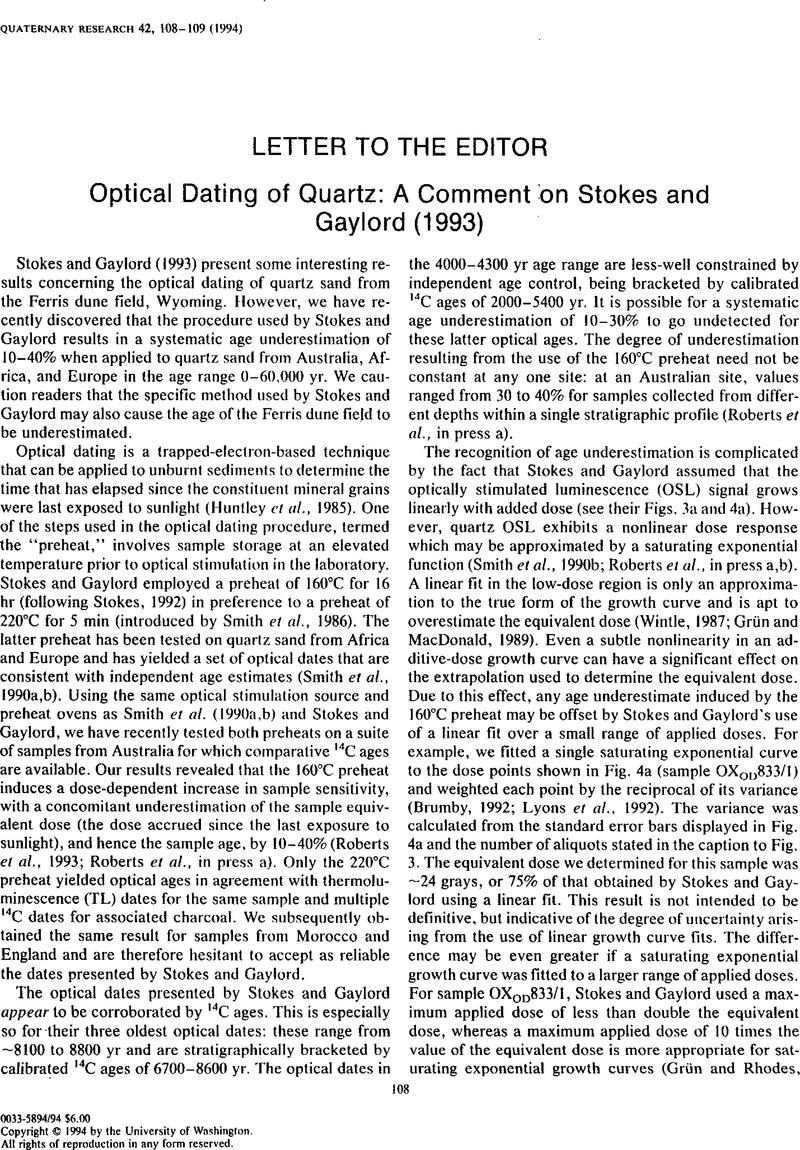Crossref Citations
This article has been cited by the following publications. This list is generated based on data provided by Crossref.
Stokes, Stephen
and
Gaylord, David R.
1994.
Reply to Robertset al.(1994) Optical Dating of Quartz: A Comment on Stokes and Gaylord (1993).
Quaternary Research,
Vol. 42,
Issue. 1,
p.
110.
Mahaney, William C.
1995.
Dating methods: review for 1994.
Progress in Physical Geography: Earth and Environment,
Vol. 19,
Issue. 3,
p.
399.
Grün, Rainer
1996.
Errors in dose assessment introduced by the use of the “linear part” of a saturating dose response curve.
Radiation Measurements,
Vol. 26,
Issue. 2,
p.
297.



